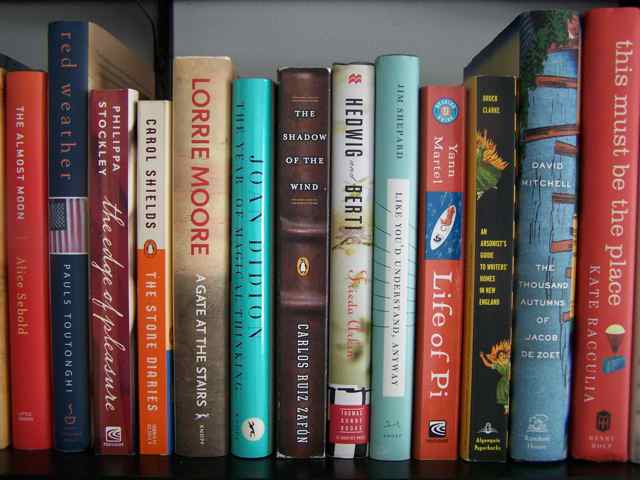 Like many readers, I keep a list of books I eventually want to get to, but author Jo Walton mentions so many intriguing titles in Among Others, a novel in diary form, that they threaten to completely overwhelm my list.
Like many readers, I keep a list of books I eventually want to get to, but author Jo Walton mentions so many intriguing titles in Among Others, a novel in diary form, that they threaten to completely overwhelm my list.
Fifteen-year-old Morwenna, the narrator of Among Others, a novel in diary form, is an avid reader of novels, mostly science fiction and fantasy, but also historical ones set in Ancient Greece or Rome. With all the shout-outs to 1960s and 70s’ science fiction authors, like Roger Zelazny and Samuel R. Delany, Among Others at times seems less like reading someone else’s diary, than like reading someone else’s reading diary. (If that still sounds interesting, then please keep reading this blog post. Otherwise, you can forget about Among Others, but you’ll miss out on a quasi-magical, quietly memorable coming-of-age story, if you do.)
While Morwenna, or Mor or Mori, as she is known, is grieving the death of her twin sister in an accident that she herself survived (with a badly injured leg), she runs away from her mother and is sent to live with her father and his older sisters — all strangers to her. Her father left when Mori was very young; he was removed from all of the wedding pictures and never spoken of by the family. Now, in the fall of 1979, Mori is so far removed from her childhood in Wales that when she says “You’re very English” to her three English aunts, they take it as a compliment.
Her aunts pack this strange, prickly, adolescent niece with her odd-sounding Welsh accent straight off to an all-girls English boarding school where everyone likes sports and no one except the school librarian reads anything beyond what is assigned. But Mori is even more strange than her limp and her reading addiction make her seem, because a.) she can see fairies; b.) her mother (crazy? a witch?) scares her half to death; and c.) she believes she can perform magic. Here’s Mori looking back on her childhood years with her twin sister:
It wasn’t that we didn’t know history. Even if you only count the real world, we knew more history than most people. We’d been taught about cavemen and Normans and Tudors. We knew about Greeks and Romans. We knew masses of personal stories about World War II. We even knew quite a lot of family history. It just didn’t connect to the landscape. And it was the landscape that formed us, that made us who we were as we grew in it, that affected everything. We thought we were living in a fantasy landscape when actually we were living in a science fictional one. In ignorance, we played our way through what the elves and giants had left us, taking the fairies’ possession for ownership. I named the dramroads after places in The Lord of the Rings when I should have recognised that they were from The Chrysalids.
When I saw Among Others reviewed on the things mean a lot blog, I added it to my to-read list, because it was a realistic novel with fantasy elements which appeals to me (see my post about The Magicians by Lev Grossman), because the things mean a lot librarian-blogger seems to like a lot of authors I also like (e.g. Connie Willis), and because she says: “This is a very quiet and understated novel, and it’s perhaps more about reading than about anything else.” It is quiet and understated; it’s also slow to build, with occasional short bursts of action and a lot of deliberately loose ends. (Also, a heads-up to potential male readers — however geeky, Mori is still a 15-year-old girl writing about her life, so you’ll have to deal with that.)
So, should you read Among Others or not? Maybe fantasy author Robin Hobb‘s blurb for the book says it best: “If you love science fiction and fantasy, if reading it formed your teen years, if you remember the magic you used to do, if you remember the absolute joy of first discovering those books, then read this.”
